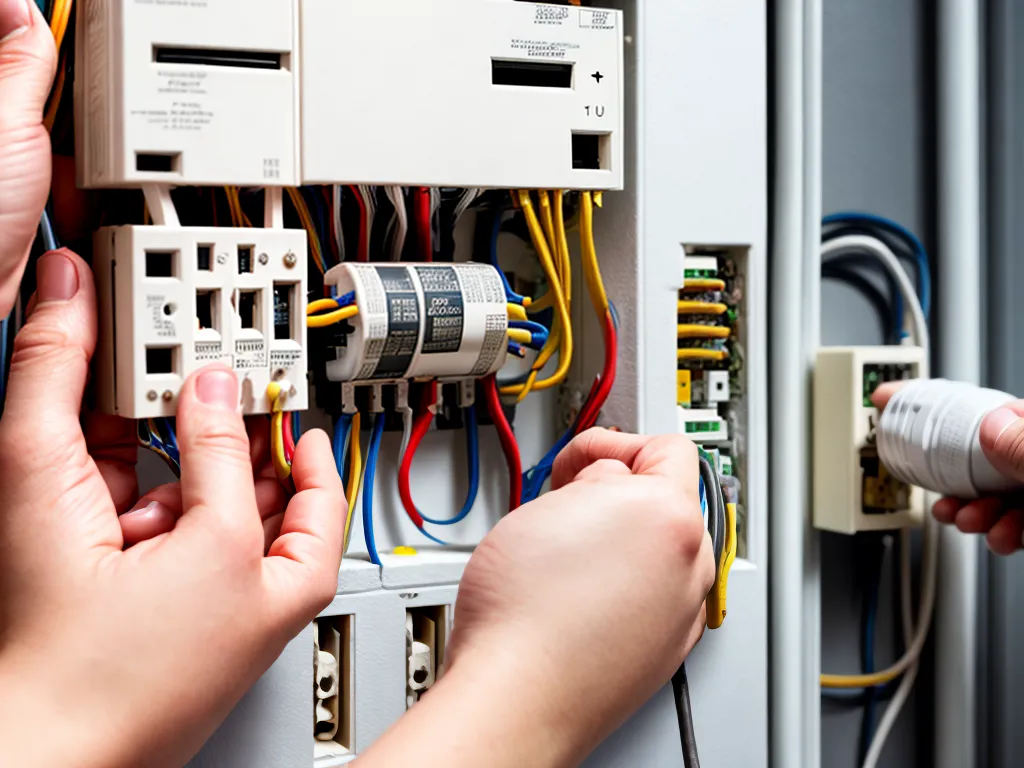
How to Rewire Your Home's Electrical System Yourself on a Tiny Budget
Assess Your Electrical Needs
Before rewiring your home's electrical system, I first took stock of my current electrical usage and future needs. I walked through each room and made notes on what was plugged in and how many lights/outlets were in use. This helped me determine if certain rooms or circuits needed upgrades to handle more power. I also thought ahead to any new appliances I might add in the future like an electric vehicle charger. By evaluating my electrical needs upfront, I could plan updates accordingly.
Learn Electrical Safety Basics
Working with electrical wiring can be extremely dangerous if proper precautions aren't taken. Before touching any wires, I made sure to turn off the main breaker to cut power to the whole house. I also tested wires with a non-contact voltage tester before working on them. Safety gear like insulated gloves, glasses, and electrical tape was essential. I never worked on live wires and had someone with me in case of an emergency. Taking electrical safety certification courses was also hugely beneficial for learning code requirements. With the right knowledge, I could avoid hazards like shocks, electrocution, or even fires.
Understand Electrical Codes
Electrical work must adhere to national and local building codes for safety reasons. I studied key codes like the National Electrical Code and my local jurisdiction's policies. This covered rules on outlet spacing, wire gauges, load calculations, circuits, junction boxes, and more. I also got the proper home electrical permits before starting work. Having my project inspected ensured it was up to code. While daunting at first, grasping electrical codes gave me confidence that my DIY rewiring would meet professional standards.
Choose the Right Wire Gauge
Selecting the proper wire gauge or thickness was critical so my electrical system could handle enough power. Thicker wires are better for high voltage appliances like electric dryers or stoves. I used 10/2 gauge wires for my main supply lines rated for 30 amps or higher. For standard 15 amp circuits powering lights and outlets, 14/2 gauge was sufficient. I didn't try to save money on thinner wire, as it could overheat and cause fires. Using the wire ampacity charts in electrical codes ensured my wire gauges matched their electrical loads.
Map Out Your New Wiring Plan
Planning my new circuit layouts on paper first made the actual rewiring much simpler. I mapped which rooms would be on each circuit along with any new lighting, switches, and outlets I wanted to add. This let me purchase the right amount of wire and breakers for my electrical panel ahead of time. I also drew diagrams showing where all the wires would run through the walls, attic, and basement. Having a wiring roadmap to follow kept my project organized and on budget without any surprises.
Replace Electrical Panel if Needed
Upgrading my old 60 amp electrical panel to a 200 amp model provided room for more circuits. This ensured I wouldn't max out my panel's capacity down the road. A larger panel also let me add bigger 240-volt circuits for large appliances without overloading the system. I hired an electrician to safely install the new panel, which included a whole-home surge protector and arc fault breakers. While not a cheap upgrade, a new panel gave me essential power and flexibility.
Add Electrical Outlets and Switches
One of my main goals was adding more outlets around the house for convenience and modernizing old two-prong outlets for safety. I installed tamper-resistant outlets in kitchens, bathrooms, and kids' rooms along with ground fault circuit interrupter (GFCI) outlets where needed. I also added dimmer switches, smart switches, and extra switch-controlled outlets for lamps and appliances. Having ample, well-placed outlets and three-way switching improved my home's livability.
Use Safe Installation Practices
During the rewiring process, I was diligent about safe installation methods. I anchored cables securely in junction boxes and drilled holes at stud centers to avoid hitting plumbing. I stapled cables every 4.5 feet as required by code for support and used cable clamps properly. My splices were cleanly spliced, tightly twisted together, and insulated. I also labeled every wire and circuit clearly. Taking the time to install wires the right way would prevent issues down the road.
Inspect and Test Your Work
Once the rewiring was complete, I thoroughly tested each circuit before closing up the walls. I checked for proper grounding, voltage, and polarity first for safety. Every outlet was tested for correct wiring and GFCI functionality. I also load-tested circuits by running multiple devices and appliances simultaneously to check for shorts or loose connections. For peace of mind, I hired an electrician to inspect my work and catch any mistakes. They confirmed my DIY rewiring met the electrical code requirements.
Create a Detailed Circuit Map
Finally, I created a detailed circuit map showing all the new wiring. This identified which rooms, lights, and outlets were on each circuit along with amperage and voltage. I included diagrams of wire runs and junction points too. This would prove invaluable for any future electrical work or troubleshooting needed. With meticulous planning, safe practices, and testing, I was able to successfully rewire my home's electrical system on a budget. Just take it slow and be extremely careful when working with wiring!